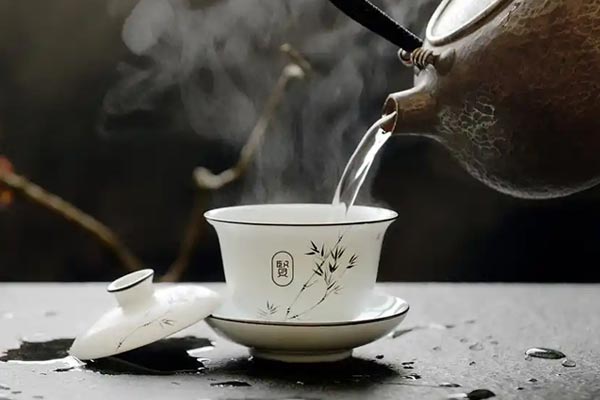When we pick up a cup of black tea, the sweet and floral aromas that linger on our noses are often the first criteria for judging its quality.
You might not know that one of the key factors determining this aroma lies in the tea's origin—the grade of the leaves at the time of picking, which quietly influences the final flavor of the black tea.
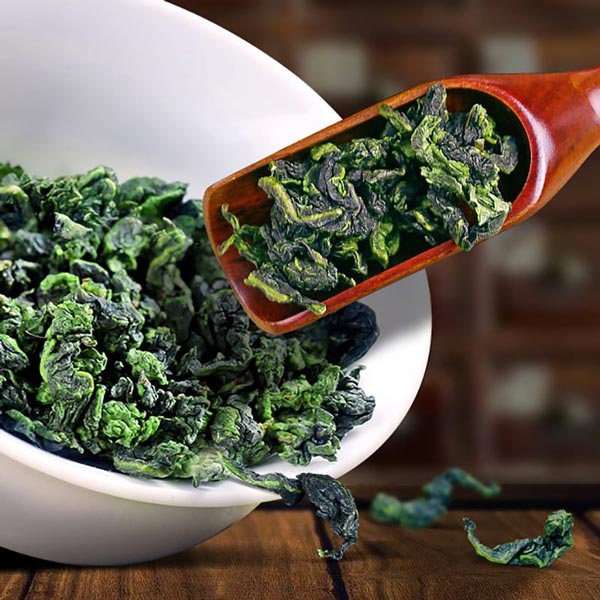
Recently, a team from the Tea Research Institute of the Hunan Academy of Agricultural Sciences published a research paper titled "Aroma Profiling by HS-SPME/GC-MS of Black Tea Produced from Different Leaf Grades" in LWT, revealing the mysterious connection between leaf grade and black tea aroma.
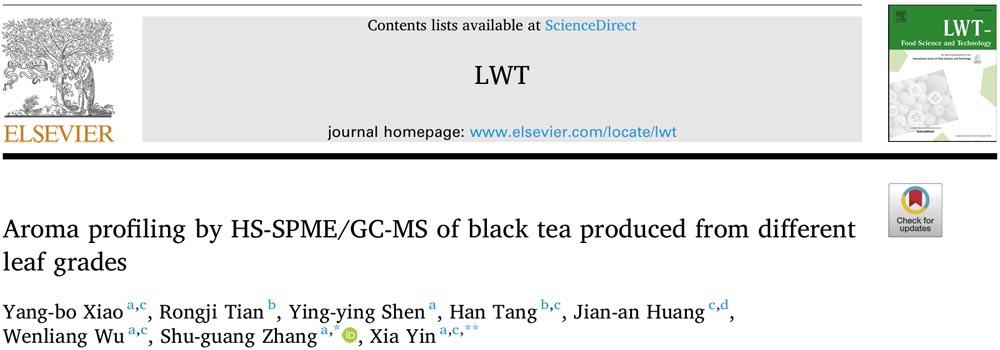
01. The Evolution of Sweet and Floral Aromas
Different parts of the leaves, depending on their maturity, contain different volatile compound precursors and enzyme activities.
These substances are converted into aroma components through a series of chemical reactions, thus affecting the tea's aroma.
Researchers selected two tea varieties, "Golden Guanyin" and "Golden Peony," for their experiments. After standardized processing, including withering, rolling, fermentation, and drying, the tea leaves, each consisting of one bud and three leaves, were classified into four grades based on their position:
Grade A (bud), Grade B (first leaf), Grade C (second leaf), and Grade D (third leaf).
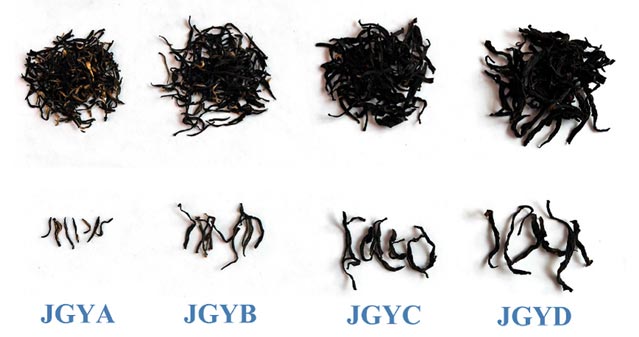
Golden Guanyin Black Tea Grades A to D
The study, through professional sensory evaluation, found a clear pattern in the impact of leaf grade on the aroma of black tea:
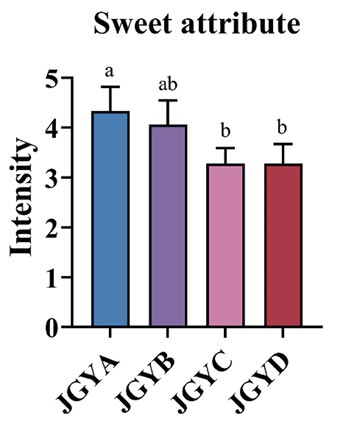
Sweetness Decreases with Grade
Sweetness is the most intuitive indicator—as the leaf grade decreases from Grade A (bud) to Grade D (third leaf), the sweet aroma of black tea gradually decreases.
Black tea made from buds (Grade A) tends to have a rich sweet aroma, while the sweet aroma of third leaves (Grade D) is noticeably lighter.
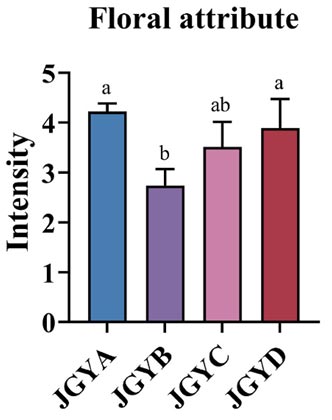
The pattern of floral aroma changes with grade
The change in floral aroma is even more distinctive: from grade A to grade B, the floral aroma decreases slightly; however, from grade B to grade D, the floral aroma gradually increases.
This "first decrease, then increase" trend makes the floral aroma of intermediate-grade black teas (grades B and C) the most balanced.
02. Key Molecules Determining Aroma
These differences are not accidental. Using headspace solid-phase microextraction/gas chromatography-mass spectrometry, scientists identified 107 volatile compounds in the two black teas, which together form the material basis of aroma.
Further analysis of the Odor Activity Value (OAV) revealed that only compounds with an OAV ≥ 1 contribute to aroma, and several molecules are particularly crucial:
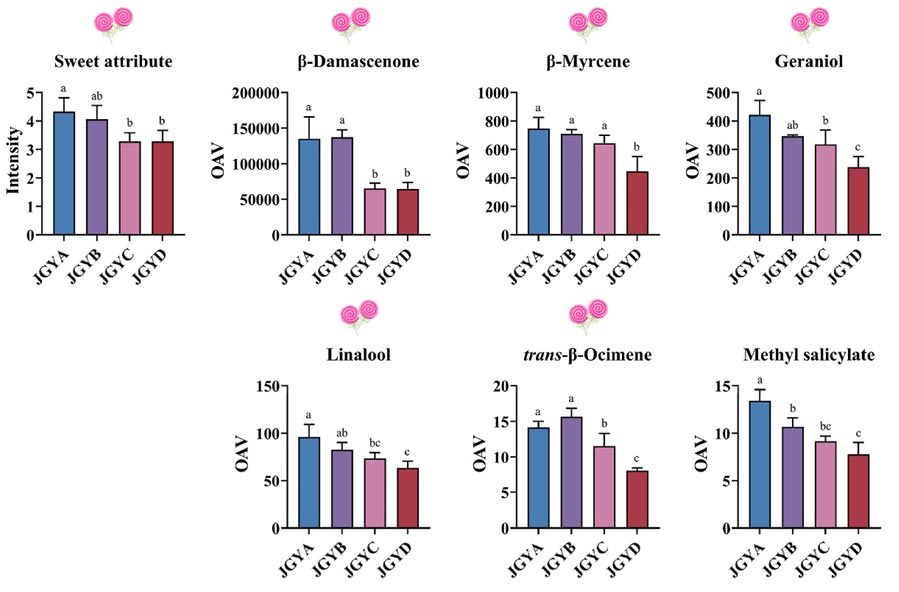
Key Aroma Compounds Consistent with the Change in Sweet Aroma
The main contributors to sweet aroma include β-damascenone, β-myrcene, and geraniol.
Take β-damascenone, for example. Its OAV values reached as high as 100,448 and 88,666 in the two black teas, respectively. With its extremely low odor threshold, it is a key aromatic compound contributing to sweet aroma.
As the leaf grade decreases, the content of these compounds gradually decreases, directly leading to a weakening of the sweet aroma.
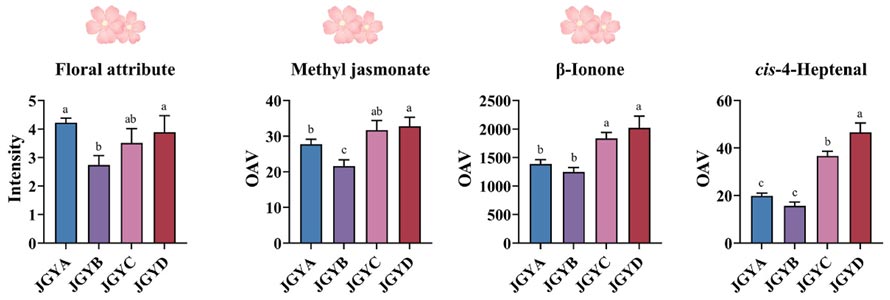
Key Aromatic Compounds Consistent with Floral Aroma
Methyl jasmonate, β-ionone, and jasmonate lactone are representative regulators of floral aroma.
Methyl jasmonate, with its characteristic jasmine aroma, shows a high positive correlation with floral aroma scores.
Its content decreases first and then increases with leaf grade, coinciding with the changing trend of floral aroma.
These compounds have different sources:
- Some derive from the degradation of carotenoids (such as β-damascenone and β-ionone),
- Some derive from the metabolism of fatty acids (such as jasmonate lactone),
- Some are directly released from terpenes (such as geraniol).
Different grades of leaves may produce different metabolic pathways, ultimately shaping the differences in aroma.
Conclusion:
This study not only reveals the relationship between leaf grade and aroma, but also provides guidance when selecting black tea: if you prefer a sweet aroma, choose black teas that are harvested to a higher standard (primarily from buds); if you prefer a floral aroma, look for black teas with slightly mature leaves.

%20--%3e%3c!DOCTYPE%20svg%20PUBLIC%20'-//W3C//DTD%20SVG%201.1//EN'%20'http://www.w3.org/Graphics/SVG/1.1/DTD/svg11.dtd'%3e%3csvg%20version='1.1'%20id='图层_1'%20xmlns='http://www.w3.org/2000/svg'%20xmlns:xlink='http://www.w3.org/1999/xlink'%20x='0px'%20y='0px'%20width='256px'%20height='256px'%20viewBox='0%200%20256%20256'%20enable-background='new%200%200%20256%20256'%20xml:space='preserve'%3e%3cpath%20fill='%23FFFFFF'%20d='M194.597,24.009h35.292l-77.094,88.082l90.697,119.881h-71.021l-55.607-72.668L53.229,232.01H17.92%20l82.469-94.227L13.349,24.009h72.813l50.286,66.45l58.148-66.469V24.009z%20M182.217,210.889h19.566L75.538,44.014H54.583%20L182.217,210.889z'/%3e%3c/svg%3e)



